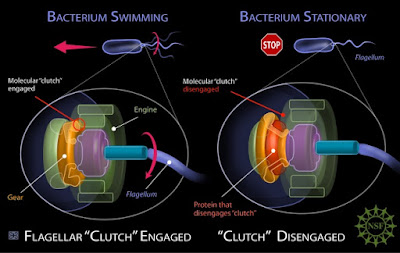Tiny Motors that Help Keep You Alive
Do you hear the trillions of motors working inside you at this very
moment? Of course not. They're tiny, and they're basically swimming.
Bacteria and most cells have them, and the bacteria have flagella that motor around performing their own functions. Cells have something very similar called cilia, but they are built quite differently than flagella.
These
motors are part of the equipment that God gave us to help keep us
going. They are also very frustrating for evolutionists, as their
specified complexity cannot be explained by evolutionary conjectures,
and evolutionary scientists admit that one did not lead to the evolution
of the other.
Trillions of unbelievably small and intricate motors are inside you, helping keep you alive. They defy evolutionary speculations and illustrate the ingenuity of our Creator.
 |
| Credit: Zina Deretsky, National Science Foundation |
Inside your body are trillions of little hair-like whips attached to most of your cells. They are constantly moving, pushing debris out of your body and sensing the world around them. A couple of centuries ago, biologists assumed they were useless remnants of bacterial evolution. Now medical researchers have found those ideas were dead wrong. These structures are essential for life and are found in virtually every organism—from algae and plants to reptiles and mammals.To finish reading, click on "The Motor of Life".
The complexity of these structures, which contain functional motors, astounds evolutionists, who cannot explain how so many intricate, interacting parts could arise together. Yet they remain doggedly certain an answer is within reach. Just one problem—they also have to explain how these motors adopted such different essential roles within each creature on the planet!
Trillions of unbelievably small and intricate motors are inside you, helping keep you alive. They defy evolutionary speculations and illustrate the ingenuity of our Creator.